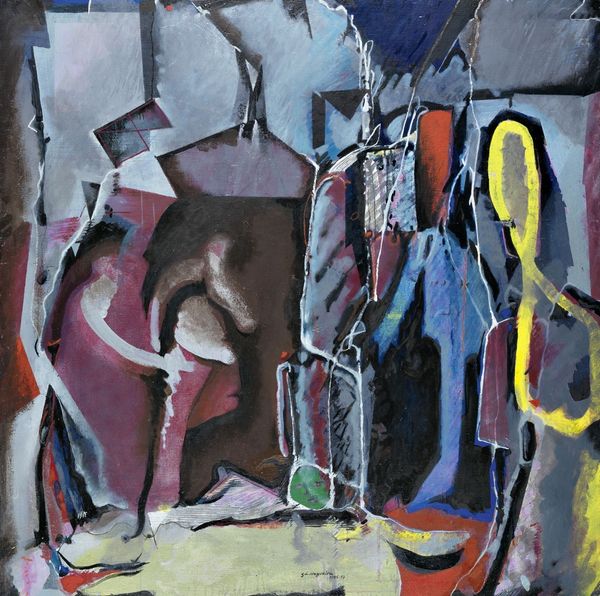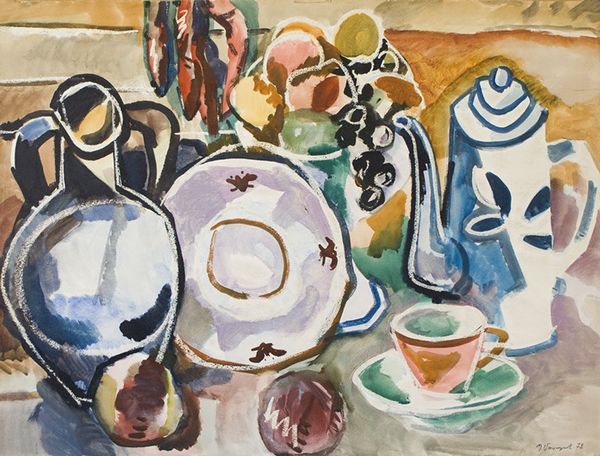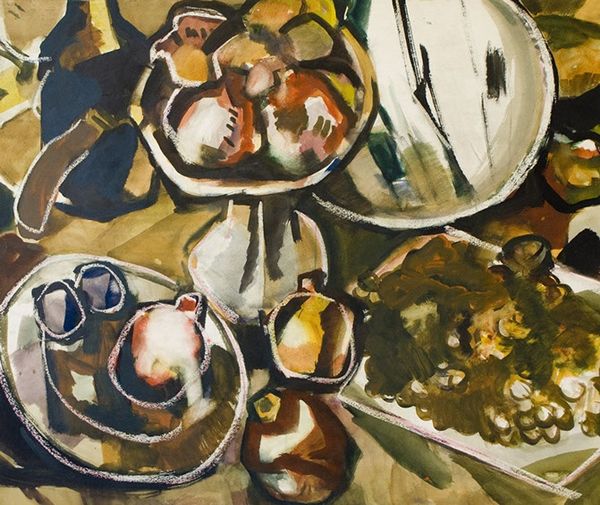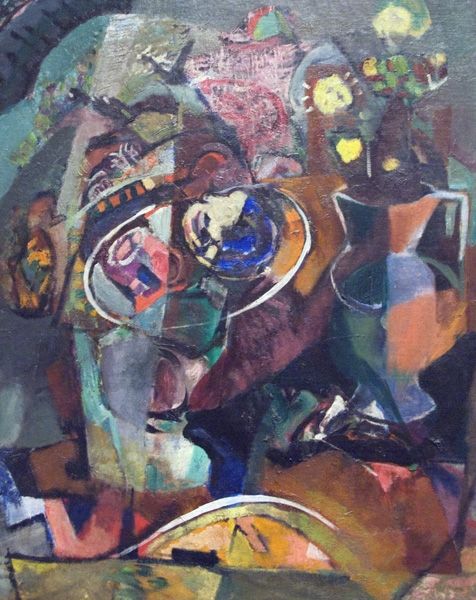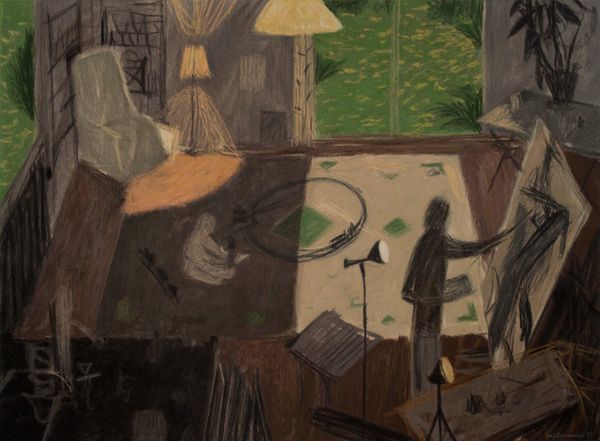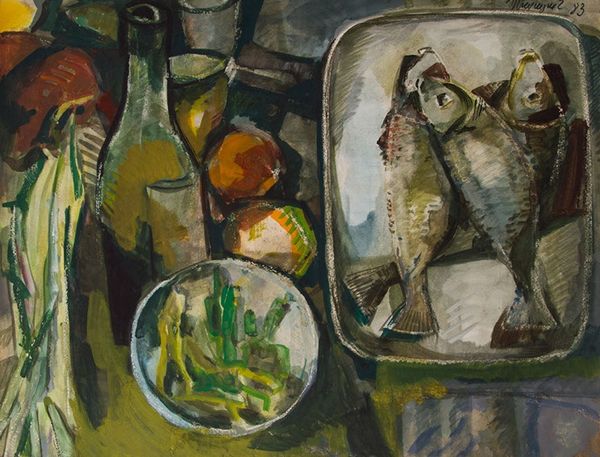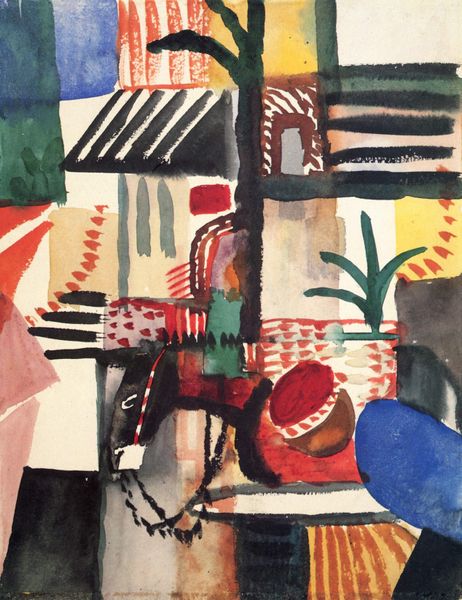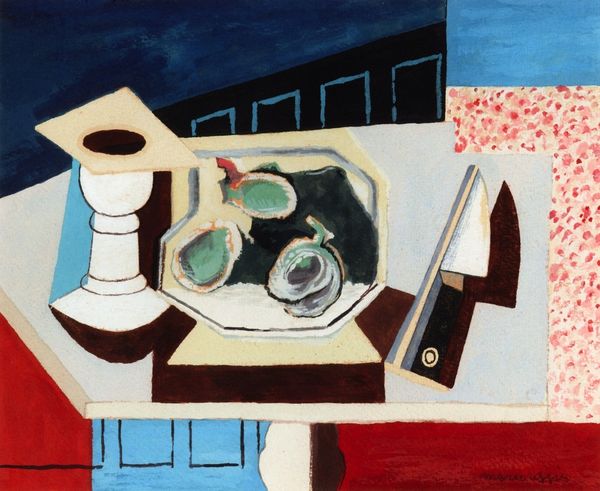
watercolor
#
portrait
#
figuration
#
oil painting
#
watercolor
#
modernism
#
watercolor
Copyright: Petros Malayan,Fair Use
Curator: What strikes me immediately is the stark stillness, a certain austerity achieved through the muted palette and geometric forms. Editor: Indeed. Today we’re looking at Petros Malayan’s “Still Life (with a Portrait of a Girl),” a watercolor piece completed in 1981. For me, the appeal resides not just in its formalism but in understanding how it's constructed. I mean, the texture of that paper alone… Curator: Agreed. Observe the tension he establishes through the portrait set against the arrangement of vessels and vegetation. The planes intersect to form a complex web of relationships. One is a depiction of life and other objects, set to live on, the other already inanimate? Editor: Precisely, but also consider the implications of ‘still life’ as genre, traditionally laden with symbolism. Given the artist's Armenian heritage, it invites contemplation about cultural preservation through handcrafted items in a society marked by conflict and upheaval, especially given the dates. Curator: The question becomes how does Malayan deconstruct or reinvent those traditional readings? He clearly eschews photorealism for a more fragmented, cubist approach. Editor: And that's what's so fascinating! The rapid execution allowed by watercolor reveals process—those layered washes aren’t about perfection. Look how he handles the glaze; the materiality is integral to understanding what seems like its message. It all makes sense once you recognize the constraints of time and labor invested to this seemingly simple piece. Curator: I agree. Ultimately, Malayan uses a reduced syntax to suggest depth, psychological tension, while remaining open to multiple interpretations, leaving us with an image which keeps our focus trained between interiority and exterior observation. Editor: Absolutely, it's about recognizing how even the humblest medium, watercolor, can encapsulate layers of historical context, emotional nuance and dedicated artistry. It really compels us to see both the object and its making.
Comments
No comments
Be the first to comment and join the conversation on the ultimate creative platform.

